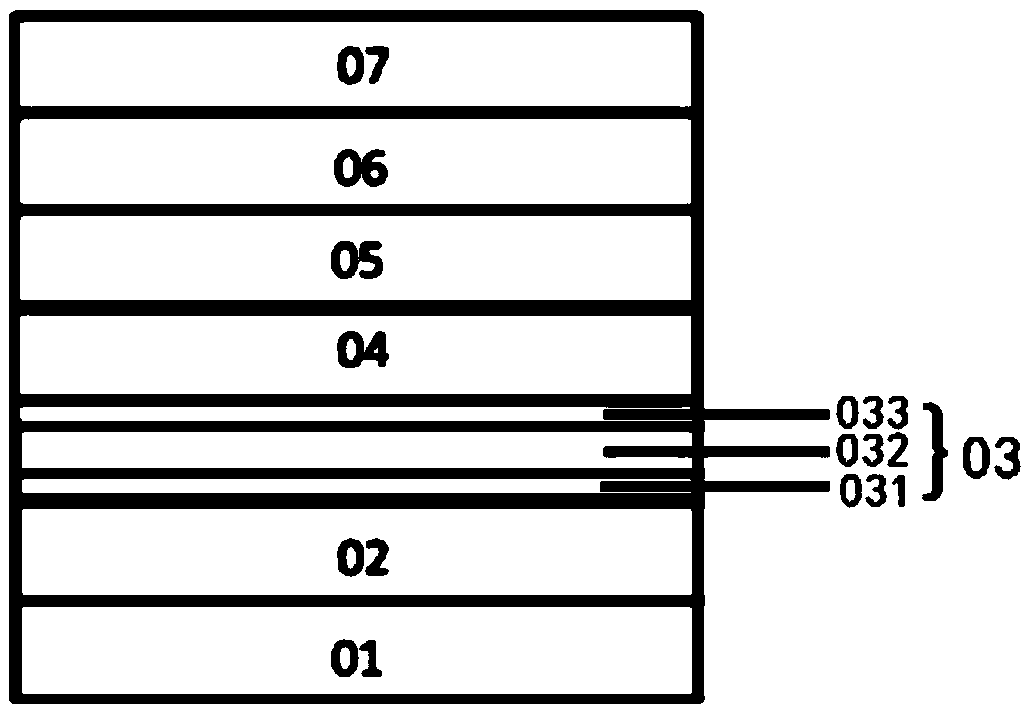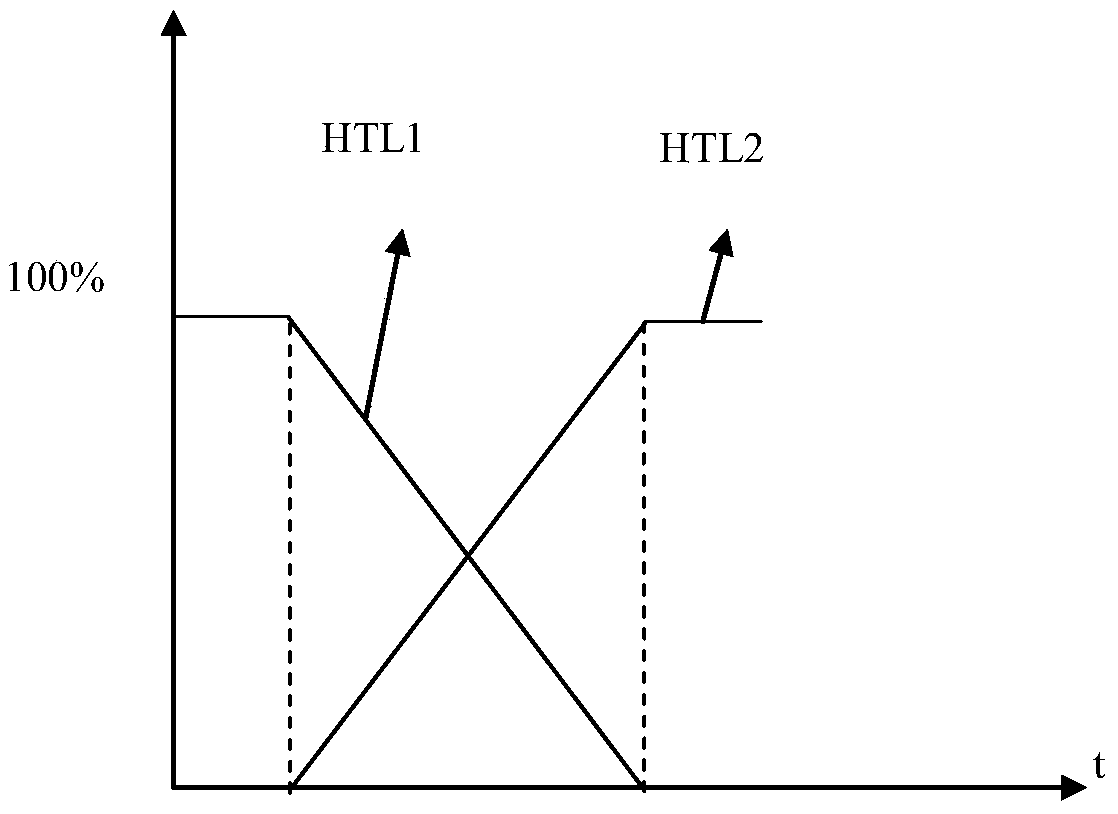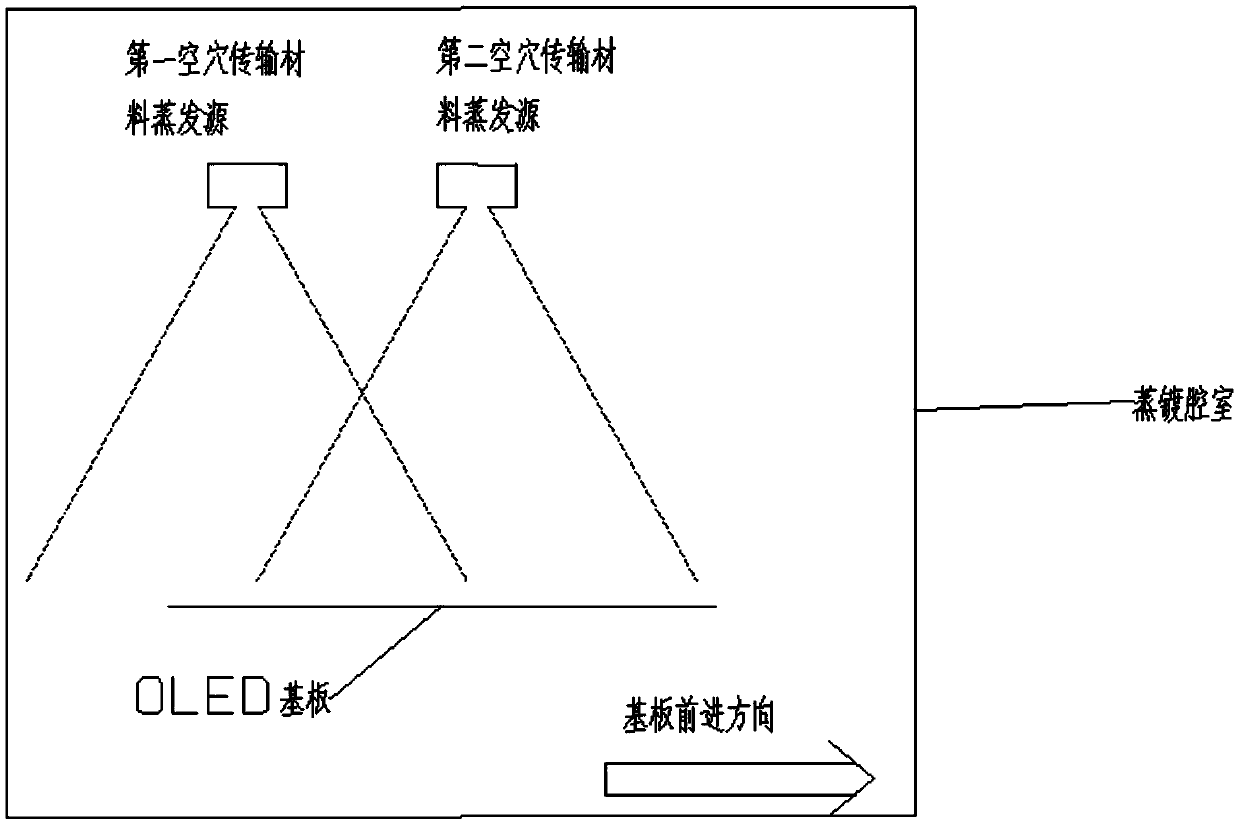Organic light-emitting device
An electroluminescent device and luminescent technology, applied in the direction of electric solid devices, electrical components, semiconductor devices, etc., can solve the problems of difficult preparation and high voltage, and achieve the effects of improving efficiency, reducing equipment cost, and reducing the number of evaporation sources
- Summary
- Abstract
- Description
- Claims
- Application Information
AI Technical Summary
Problems solved by technology
Method used
Image
Examples
Embodiment 1
[0056] ITO / HAT-CN(10nm) / NPB(5nm) / NPB: Compound 1-1(50nm) / Compound 1-1(5nm) / Compound 3-1(30nm) / Bphen(40nm) / LiF(1nm) / Al (150nm).
[0057] Hole injection layer (HAT-CN), first hole material layer (NPB), transition layer (NPB: compound 1-1), second hole material layer (compound 3-1), light emitting layer (compound 3- 1), electron transport layer (Bphen), electron injection layer (LiF), second electrode layer (cathode Al).
Embodiment 2
[0059] ITO / HAT-CN(10nm) / NPB(5nm) / NPB: Compound 1-6(50nm) / Compound 1-6(5nm) / Compound 3-1(300) / Bphen(40nm) / LiF(1nm) / Al (150nm).
[0060] Hole injection layer (HAT-CN), first hole material layer (NPB), transition layer (NPB: compound 1-6), second hole material layer (compound 1-6), light emitting layer (compound 3- 1), electron transport layer (Bphen), electron injection layer (LiF), second electrode layer (cathode Al).
Embodiment 3
[0062] ITO / HAT-CN(10nm) / NPB(10nm) / NPB: Compound 1-6(40nm) / Compound 1-6(10nm) / Compound 3-1(30nm) / Bphen(40nm) / LiF(1nm) / Al (150nm).
[0063] Hole injection layer (HAT-CN), first hole material layer (NPB), transition layer (NPB: compound 1-6), second hole material layer (compound 1-6), light emitting layer (compound 3- 1), electron transport layer (Bphen), electron injection layer (LiF), second electrode layer (cathode Al).
PUM
 Login to View More
Login to View More Abstract
Description
Claims
Application Information
 Login to View More
Login to View More - R&D
- Intellectual Property
- Life Sciences
- Materials
- Tech Scout
- Unparalleled Data Quality
- Higher Quality Content
- 60% Fewer Hallucinations
Browse by: Latest US Patents, China's latest patents, Technical Efficacy Thesaurus, Application Domain, Technology Topic, Popular Technical Reports.
© 2025 PatSnap. All rights reserved.Legal|Privacy policy|Modern Slavery Act Transparency Statement|Sitemap|About US| Contact US: help@patsnap.com



